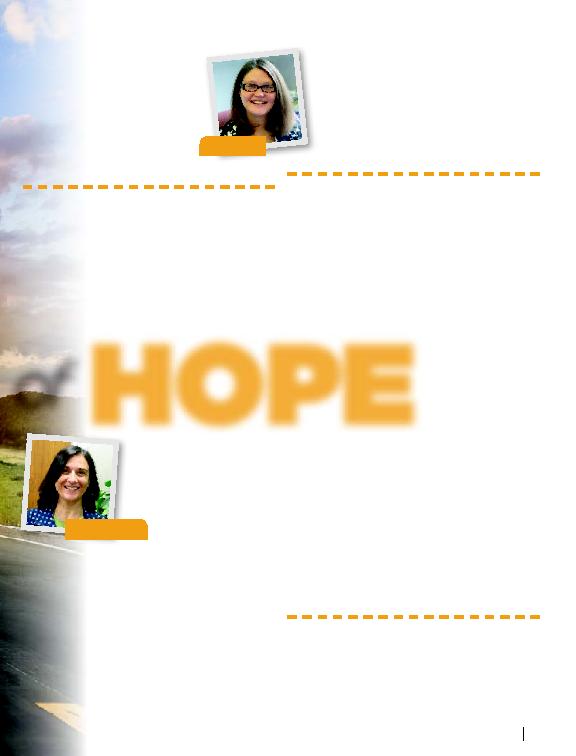
27
The War Cry | NOVEMBER 2014
Given that the poverty rate na-
tionally has ranged consistently be-
tween 15 � 21 percent and that 32
percent of children raised in pov-
erty perpetuate that lifestyle as
adults, the plan was to increase mo-
bility and develop healthy personal
and familial behavior patterns over
extended periods to bring about lasting change.
I
n recent years, especially following the economic
downturn of 2007, the Army's relief efforts have
focused on providing emergency assistance.
With Pathway, the Army applies its core strengths
to help people in need. The Army has from its begin-
nings insisted on the inherent dignity of each and
every person as a child of God, and keeps as its primary
aim personal and social transformation into redemp-
tive patterns according to the love, justice, mercy, forgive-
ness, and new life made real through the life, death, Spirit
and example of Jesus Christ.
The rollout of POH in the
Kansas and Western Missouri
Division involved eight corps in
the Kansas City metropolitan
area. It opened In July in Wichita
and in Emporia in Sep-
tember. All remaining
corps in the division are scheduled to implement POH by
mid 2016. The Central Territory has trained 186 corps in
POH, 50 more will be trained within a year and all corps
will implement the initiative by the end of 2016. The
initiative is being replicated in corps nationally as well.
For such a broad vision, one of the keys to the suc-
cess for those on the Pathway are the small steps
they take toward measurable progress and ulti-
mately graduation from POH. And behind each small
step are a number of individuals and organizations, from
case managers to community service agencies and
private funders, propelling participants forward.
The mission is to address root causes of poverty, not
simply recurring symptoms, by working with
families motivated to break out of the cycle of
crisis. Careful case management by professional
social workers and counselors guide families out
of the crisis stage by helping them first to obtain
resources such as food, money for rent, then to
set step by step action plans and connect with
community support networks.
W
hile POH is comprehensive and char-
acterized by compassionate, concerted
care, it is not for everyone. Applicants un-
dergo a thorough evaluation to establish their read-
iness to proactively overcome behaviors and pat-
terns that reinforce their impoverished identity.
In about the first 18 months of implementation, the
Kansas and Western Missouri Division had served
154 families consisting of 199 adults and 372 children,
with 31 families reaching graduation. Case manag-
ers assess a client's progress every quarter using a Self
�Sufficiency Outcomes
Matrix. On average,
clients show a growth
rate of 1.6% during
the first three months,
but at 12 months show
substantial improve-
ment, with an average
growth rate of 9.31%.
Improvement is also tracked through the Herth Hope
Assessment, a tool that evaluates a client's changing
perspective. Incomes for participants grew on average
from $13,864 upon entering POH to $23,664 within a
year. Using the ServicePoint Information System, ad-
ministrators can track services provided in coordina-
tion with other agencies and develop detailed reports
and assessments for informed case management.
Progress results from what Divisional Devel-
opment Director Scott Justvig says are the un-
derpinnings of the initiative: "Collaboration, com-
munity and relationships." Those administering
the initiative repeat the refrain with conviction.
O
ne of the stipulations for POH at the outset
was to double the impact of existing resources.
That kind of stewardship and accountability
was one of the criteria that led the Hall Family Foun-
dation to commit $3 million over a three year period
to the launch of POH in the division. Since 1943 the
foundation has followed the directives of the Hall fam-
sim
fa
cr
s
o
r
commu
a
K
D
th
ar
Kim Bloss
Mylie Hadden
HOPE
of
